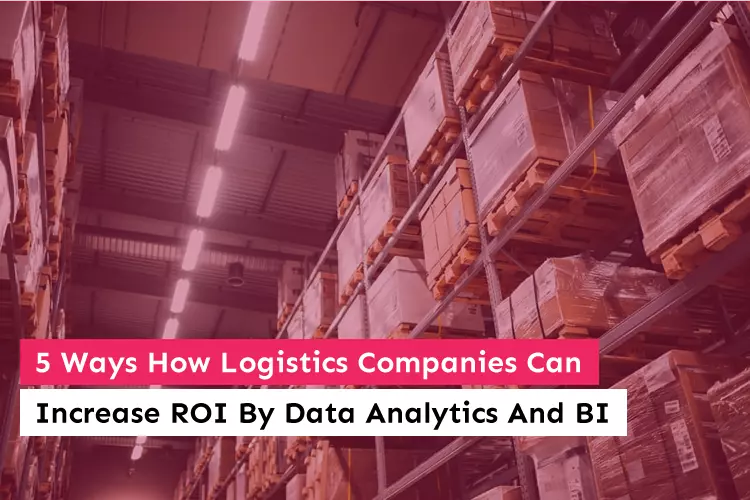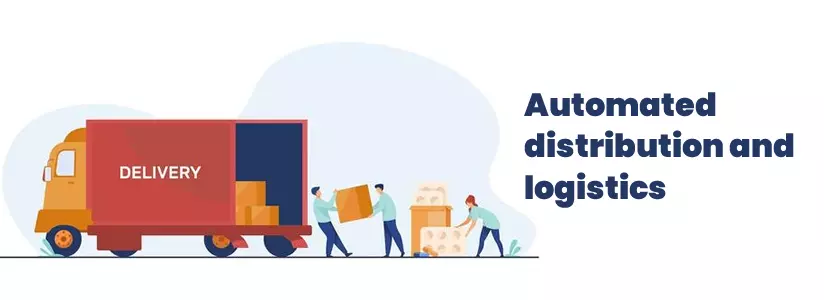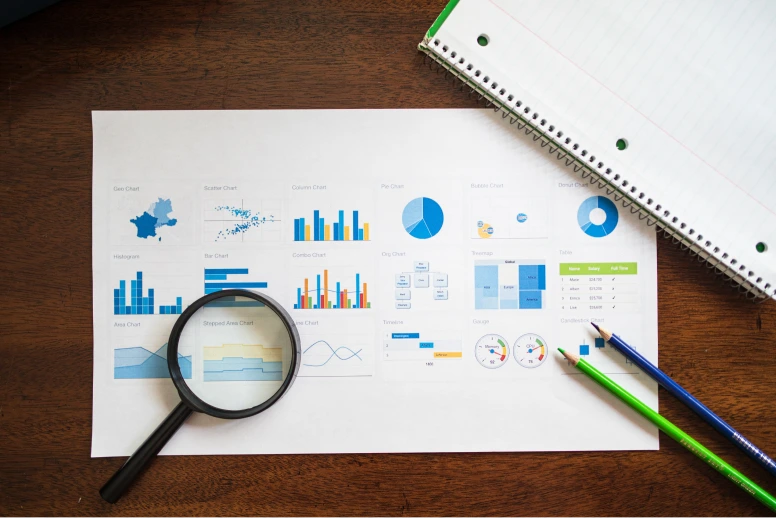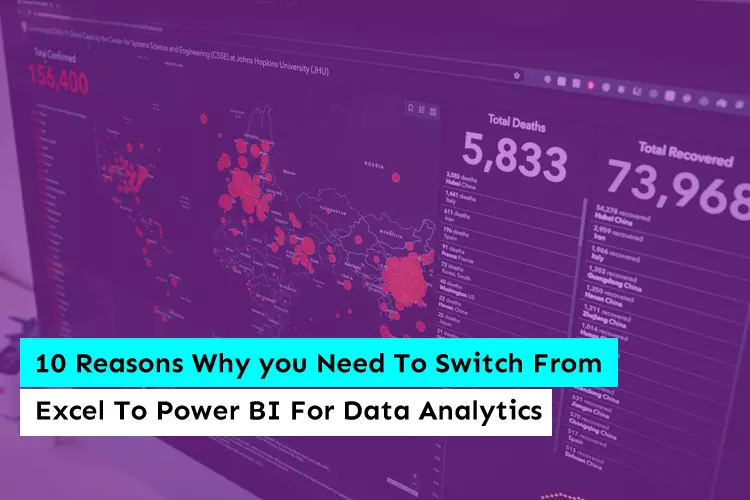5 Ways How Logistics Companies Can Increase ROI By Data Analytics And BI

Logistics and supply chains are becoming increasingly complex. Thanks to internationalization and multiple modes of transportation, the number of goods exported, imported, and delivered every day is staggering.
With amazon prime deliveries, premium memberships on all eCommerce platforms, this number is bound to skyrocket. No doubt there will be more goods to be taken places in the coming years. Handling data of such enormous demands, managing staff requirements, production units, and on-time deliveries is hard without technical assistance.
This is probably the best use of technological inventions on the planet – to make computation, collection, and processing of big data sets easy. And companies know how to make use of it. Many logistics companies have indeed invested and keep on investing heavily in data analytics and Power BI softwares. To meet the rapidly changing dynamics of demand and supply, they harness the benefits of data analytics for an exemplary business run.
Looking at how the world has changed after COVID 19, it is now insane not to consider people’s online buying patterns. It’s not just the eCommerce businesses; all the logistics companies face equal stress to meet the demand on time.
Data analytics has been a godsend for such goods transport-based enterprises. The software doesn’t just analyze data; it has several advantages for suppliers. Here are the top five ways to help logistics companies save a larger portion of their profits.
- Smart inventory management
Just looking at the massive stack of logistics data can give operations managers a whiplash. It’s no more about which product and how much inventory. The real deal is to get them to the customers in the shortest time span.
Data analytics and business intelligence softwares are made of the latest technology for reading more and more data. The tech assesses suppliers on many KPIs like customer reviews, location, quality of product or service, and others for a commodity in demand. It tracks and studies the supplier’s previous records for better sourcing and supplier management.
Also Read: Why Data Analytics Solutions Should Be The New Trend SMBs Catch Up On
Smart inventory management by analyzing the supplier’s recorded data over time helps increase efficiency and profitability across the supply chain. Adapting data analytics can cause a high increase in ROI for any logistics company.
Sounds exaggerated? Let’s see an example.
Amazon has teamed up with its manufacturers to track their inventory. Just by knowing which product is available in their warehouses, they can fulfill orders by assigning the closest vendors or customers to them. This alone has reduced their shipping cost by more than 10%.
And why just amazon? It’s the same story for all the companies which adapted data analytics for their goods transportation management. The quality of customer service, customer satisfaction, speed of supply, and demand over the supply chain has increased by a minimum of 10%.
- Credible demand forecasting
All businesses, whether B2B or B2C, have customer/client demands to meet. Data analytics contributes heavily to fulfilling these deadlines by analyzing suppliers’ records and integrating them with seasonal fluxes and trends. Data analytics and BI platforms predict the demand for products, warehouses, and locations in real-time.
Earlier demand forecasting was calculated through long spreadsheets with numbers all over them. It’s not possible anymore. It will be difficult and take 10x more time for data analytics and BI softwares to predict the accurate demand than human calculations.
More so, companies in the logistics sector are actively voting for data analytics as an integral part of their operations. Recently with the development of AI, data analytics tools are becoming more competent to predict and adapt to rapidly changing market demands. There is no reason not to invest in data analytics and BI solutions in 2021.
- Enhanced production efficiency
A simple three-step production process for any company is 1. Ordering the raw material, 2. Manufacturing the products, 3. Delivering the supply. If each of these steps is optimized, then production efficiency will be ideal.
Data analytics can help improve all of the three processes. Predicting the amount of raw material required from vendors, the number of products to be manufactured in a day to meet the necessary demand, and booking deliveries through the shortest routes, all of this can be done with data analytics and business intelligence softwares.
Also Read: Revolutionize Your Business Operations With Microsoft Power BI
DA optimizes routes and warehouse operations to manage the newly manufactured goods. As per the location and capacity, the software suggests maximum production without any losses in the process. Warehouses can be used to keep the extra raw material for rainy days or unpredictable events like the coronavirus pandemic. Data analytics will keep track of all the contingencies and efficiently make propositions for the best production and supply chain performance.
- Automated distribution and logistics

Data analytics optimizes delivery routes by factoring data through different sources like GPS, weather reports, traffic data, vehicle management, repair, and other known risks. It tells the drivers to take the best route for safe and quick deliveries. And also suggest rerouting in case of natural disasters or other causes of delays.
This might not sound so impressive just a few decades ago; the transportation system across the world was nothing like it is now. We don’t just have every possible way of shipping products; we are continuously inventing new ones. Musk’s boring company and Virgin Hyperloop are the future of distribution and logistics.
Maybe we went too far in the future, but is it really that far for your business without data analytics?
And we definitely should not forget the drones delivery system, which has been evolving and implemented at a lighting speed. Drones are just the beginning.
If you think just 20 years in the future, you can clearly see that a logistics business can’t survive without data analytics under its belt.
- Efficient Supply chain management
Big logistics companies have to manage hundreds and thousands of products each day. Shipping them across the world needs innovative supply chain management.
With machine learning abilities, software like Power BI can search patterns in datasets and suggest more innovative supply chain and inventory management decisions. It can help you look at the weekly estimate or the grand vision for five years before making business-altering decisions. Having such essential insights are the differentiators for successful enterprises in the logistics sector from those who are not.
Data analytics and business intelligence solutions have many other benefits apart from increasing ROI, like beating the competition, improving efficiency and productivity throughout operations, and preparing for the future.
How would you integrate data analytics for your logistics business?
Almost all the businesses in logistics are using data analytics to run operations and supply chains. It will be the core requirement for a logistics company in the next year. So every day you are running a logistics company without data analytics, you are burning a lot of capital through inefficient management and delivery systems.
Our company will love to help your business integrate data analytics and business intelligence solutions for 2022. Reach out to our Power BI development agency for more info.
Similar Posts

Top 10 Features of Power BI for Creating Powerful Data Visualizations
Are you ready to unleash the hidden potential of your business data? In today’s data-driven world, the ability to extract meaningful insights and transform them into actionable strategies is the key to staying ahead of the competition. But with vast amounts of data at our fingertips, how can we efficiently navigate through the sea of […]...

How Power BI Is Making the Energy Industry Energy Efficient
Everything in today’s world runs on energy and its demand is rising exponentially. This energy demand will keep on rising as every industry directly or passively operates on it. ...

10 Compelling Reasons to Switch from Excel to Power BI for Data Analytics
Microsoft Excel has been the preferred tool for business reporting for many years. Since 2015, when Microsoft launched Power BI – a “business intelligence” tool that delivers robust analytics and reporting capabilities, it has been simpler to comprehend and visualize complex data. The mindset of business owners began to change their approach and quickly changed […]...











